Trail Camera
These pictures were all taken with a motion–activated camera. This device goes by various names: trail camera, game camera, camera trap. Hunters usually use the first two terms in that they place the camera on wildlife trails so as to gain a tactical advantage over potential game. Incongruously, those who study wildlife use the menacing term, camera trap. My own use of a motion–activated camera is benign: although it is often deployed on a wildlife trail, nothing is trapped and the only things destroyed are photons.
For whatever it is worth, I note that all of these pictures were taken within an area of one hectare along the shore of Kootenay Lake. However, these are but a few of the many images found on this Website devoted to the Lake.
A rollover of a thumbnail here displays a larger version; a click links to the page upon which the image is discussed. A number of images link to the same page.
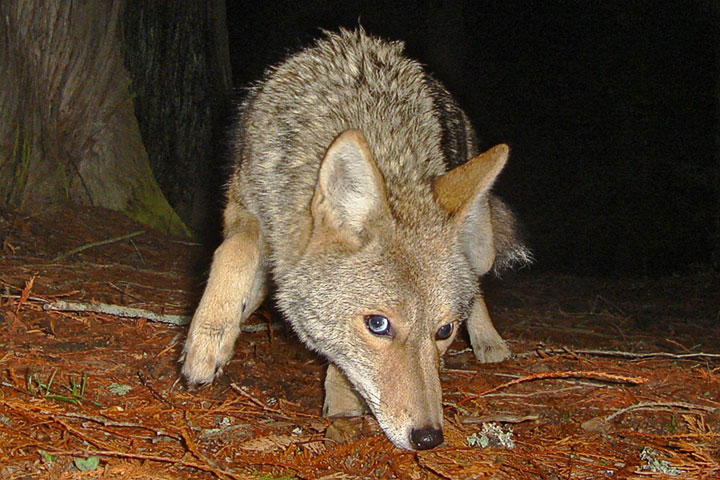 A rooting coyote often leaves muzzle–sized clearings on the forest floor.
A rooting coyote often leaves muzzle–sized clearings on the forest floor.
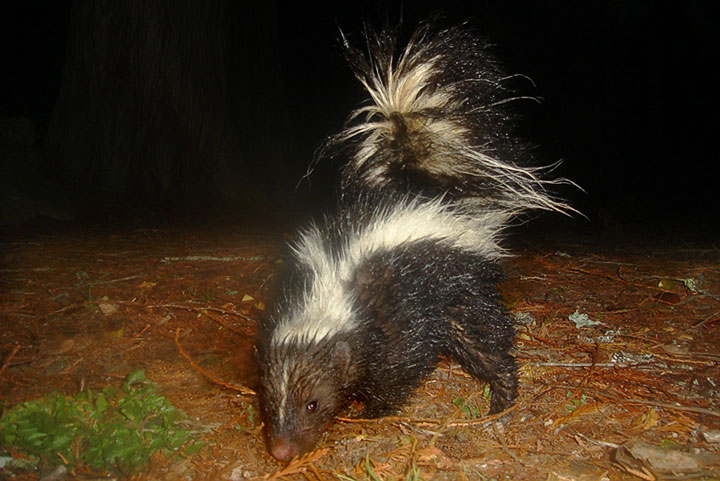 A rain–soaked skunk forages on the forest floor.
A rain–soaked skunk forages on the forest floor.
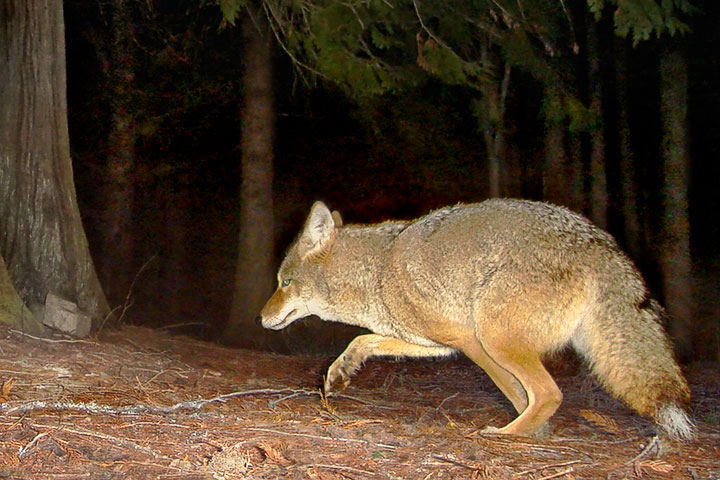 The white tip on this coyotes tail resulted from damage—probably from frostbite.
The white tip on this coyotes tail resulted from damage—probably from frostbite.
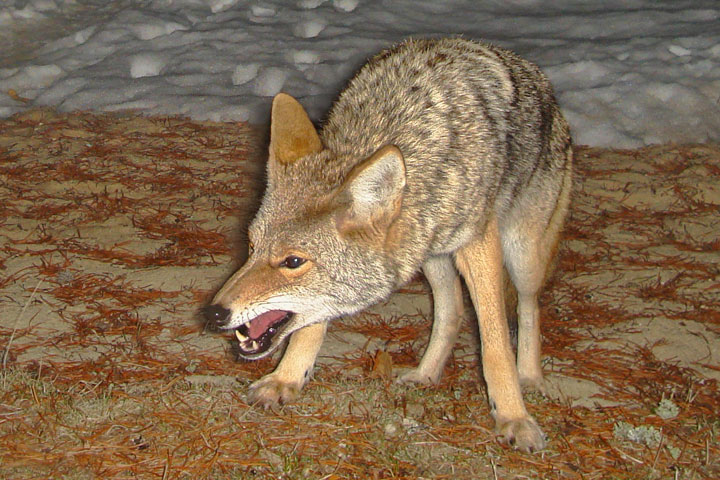 "Hey raccoon, back away, this is my space".
"Hey raccoon, back away, this is my space".
 Say please.
Say please.
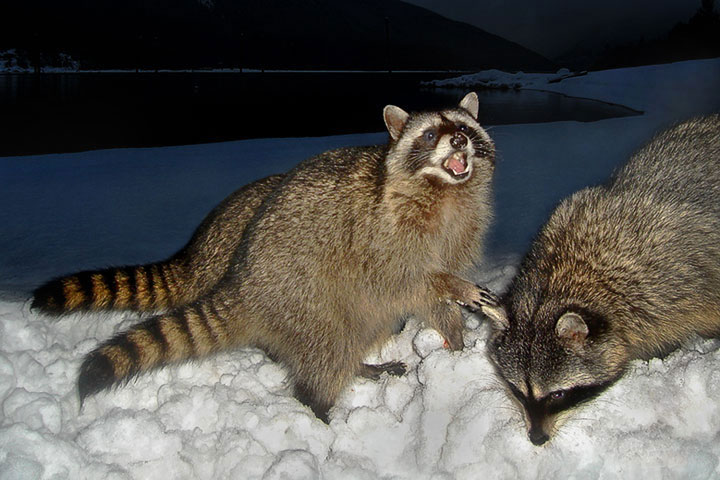 A raccoon probably reacting to a perceived danger.
A raccoon probably reacting to a perceived danger.
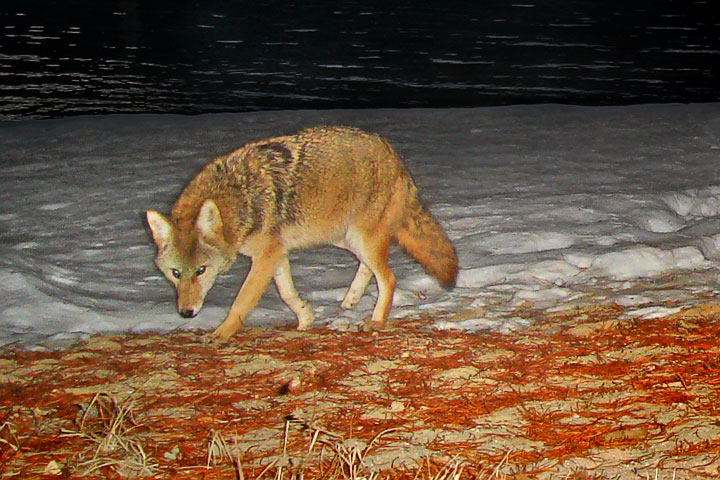 One of a pair of coyotes which left deer parts on the snow nearby.
One of a pair of coyotes which left deer parts on the snow nearby.
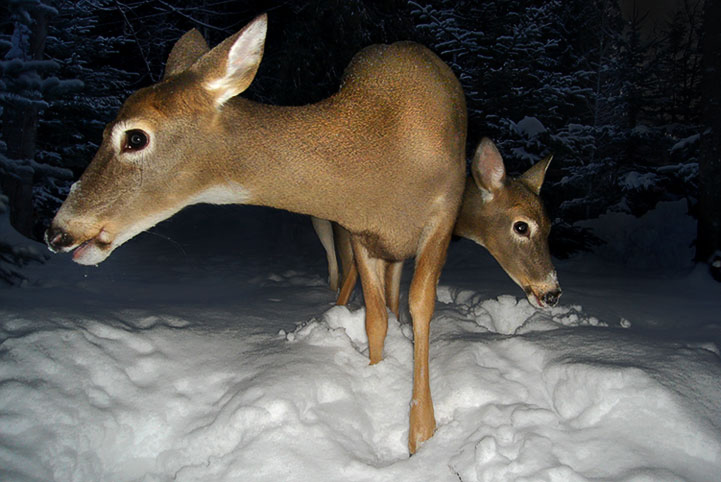 Does often forage together.
Does often forage together.
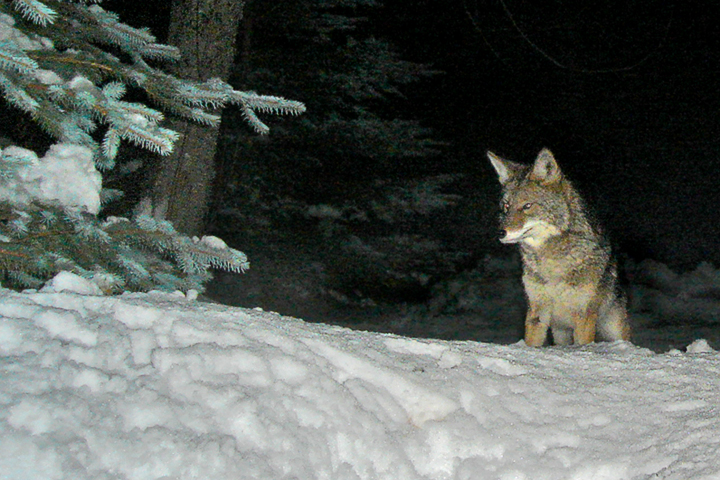 This coyote came by early Christmas morning—probably looking for reindeer.
This coyote came by early Christmas morning—probably looking for reindeer.
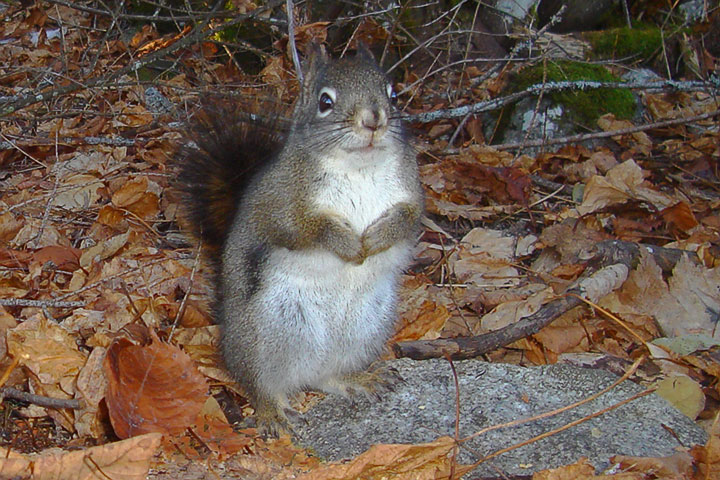 A red squirrel pauses while searching for food on the forest floor.
A red squirrel pauses while searching for food on the forest floor.
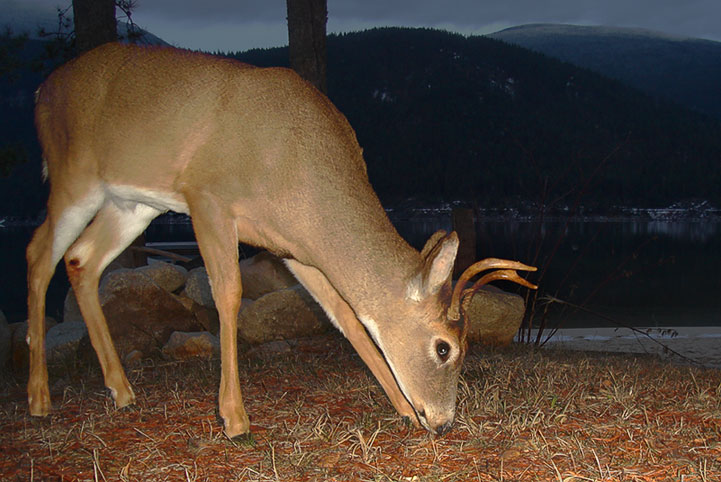 A yearling white-tailed buck has spikes for antlers.
A yearling white-tailed buck has spikes for antlers.
 Raccoons forage along the lakeshore in the evening.
Raccoons forage along the lakeshore in the evening.
 It is early November and this lad is probably getting sleepy.
It is early November and this lad is probably getting sleepy.
 Sometimes you have to sit down on the job.
Sometimes you have to sit down on the job.
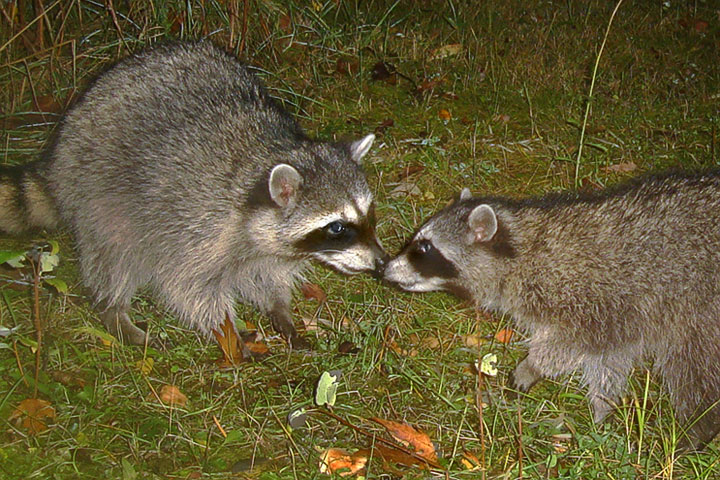 Raccoons having a nuzzle.
Raccoons having a nuzzle.
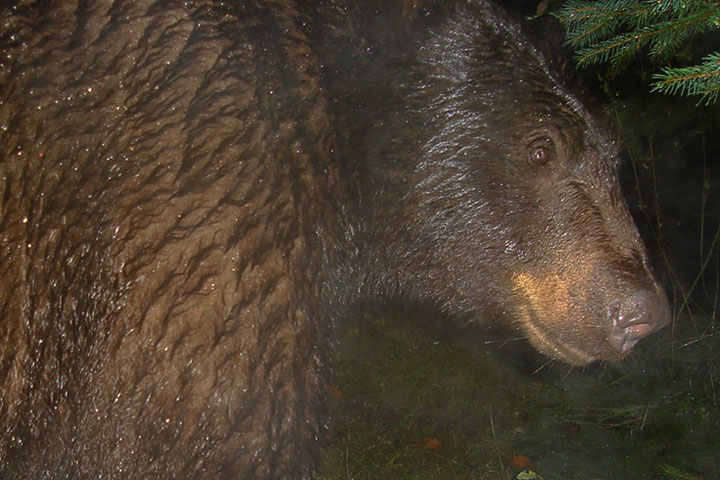 A rain-soaked black bear travels along a wildlife trail in the evening.
A rain-soaked black bear travels along a wildlife trail in the evening.
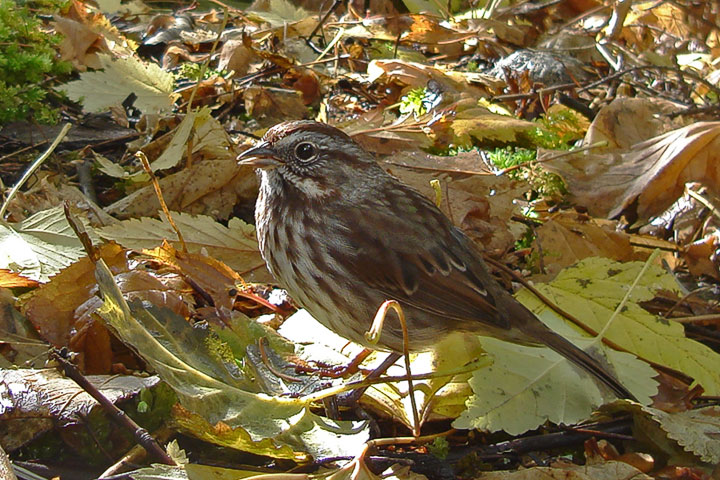 A song sparrow forages among the leaves of October.
A song sparrow forages among the leaves of October.
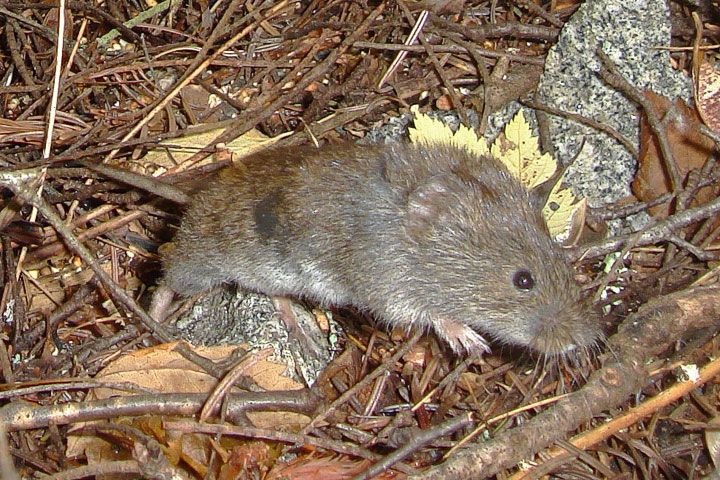 A southern red-backed vole forages among the leaf litter.
A southern red-backed vole forages among the leaf litter.
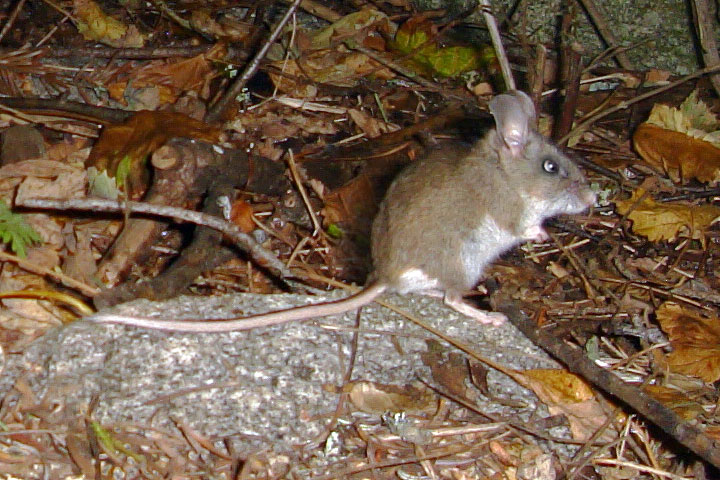 How else can you easily get a picture of a deer mouse in the wild?
How else can you easily get a picture of a deer mouse in the wild?
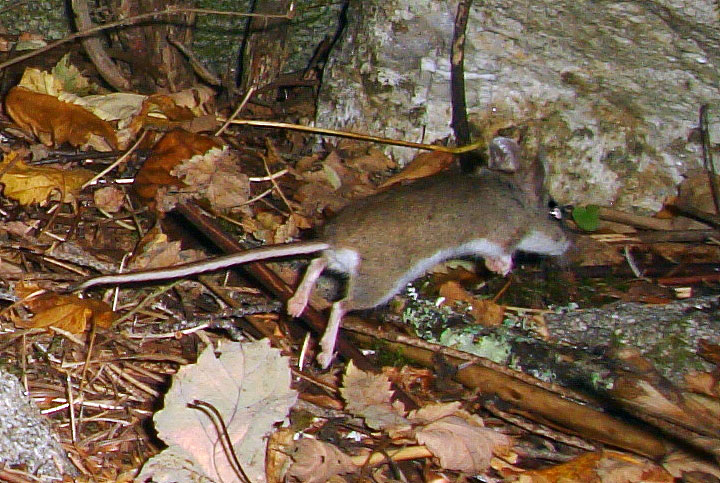 A deer mouse bounds away
A deer mouse bounds away
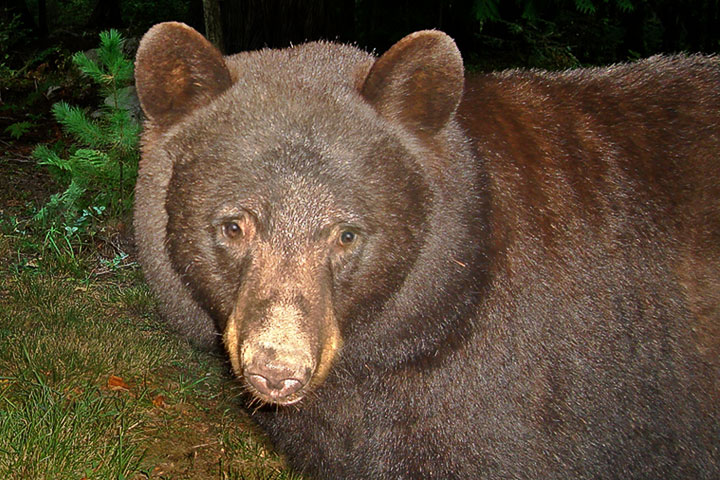 This bear is one of the many raiders of a late–summer apple tree.
This bear is one of the many raiders of a late–summer apple tree.
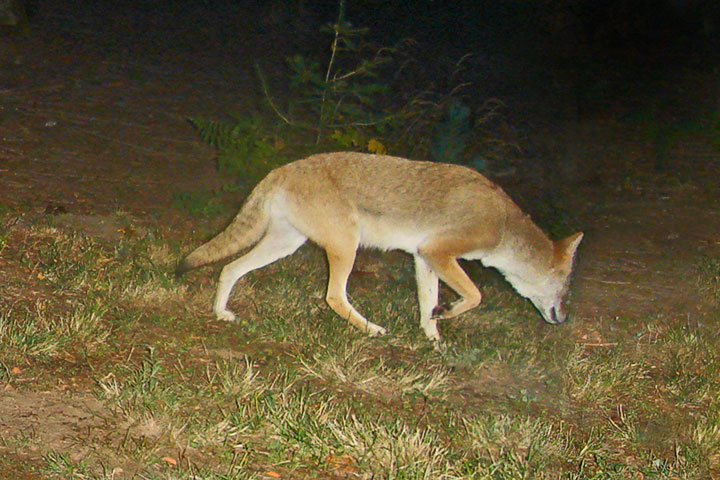 A coyote goes prowling at night.
A coyote goes prowling at night.
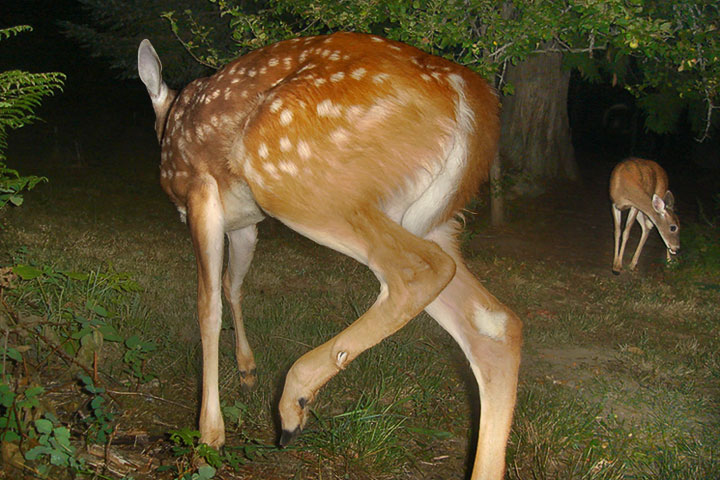 A fawn scrounges for fallen fruit with its mother.
A fawn scrounges for fallen fruit with its mother.
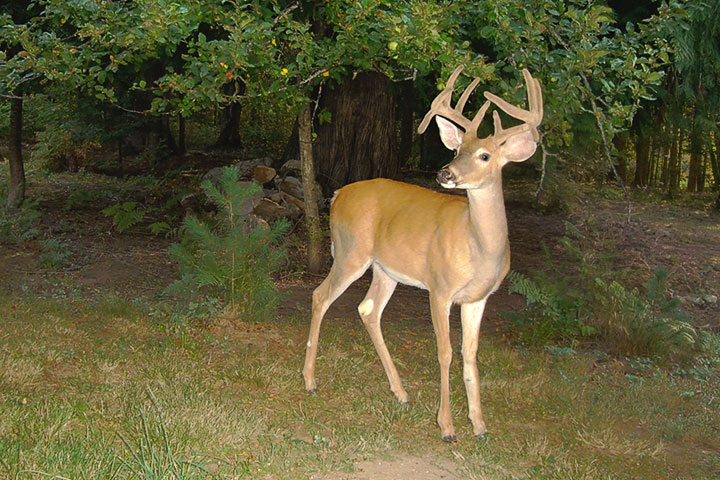 This white-tailed buck stands only 90 cm tall at the shoulder.
This white-tailed buck stands only 90 cm tall at the shoulder.
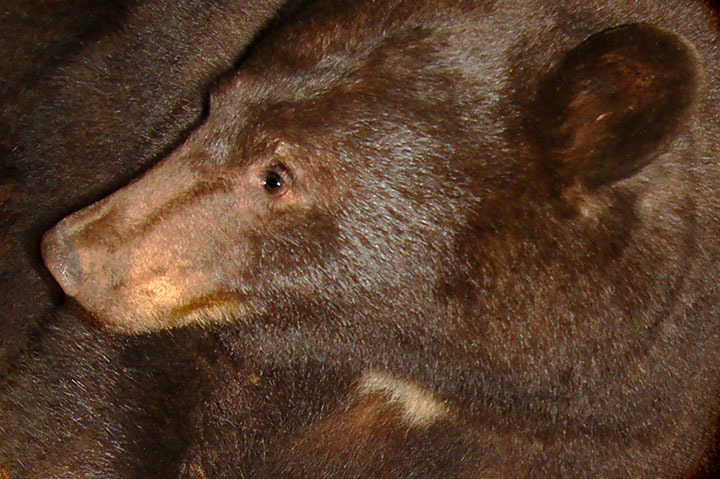 A contemplative–looking bear stops for a rest.
A contemplative–looking bear stops for a rest.
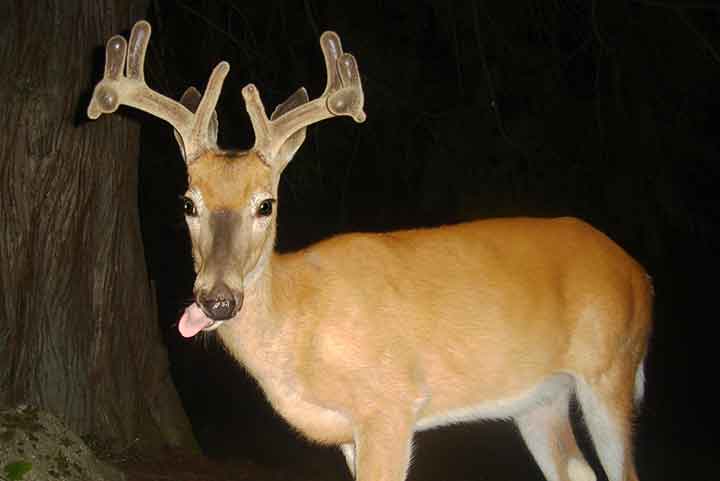 A White-tailed Buck sticks out his tongue.
A White-tailed Buck sticks out his tongue.
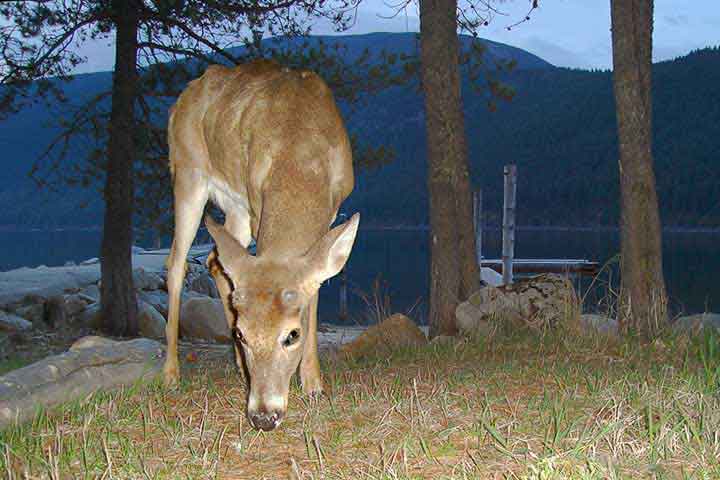 It is April and this white-tailed buck is showing antler buds.
It is April and this white-tailed buck is showing antler buds.
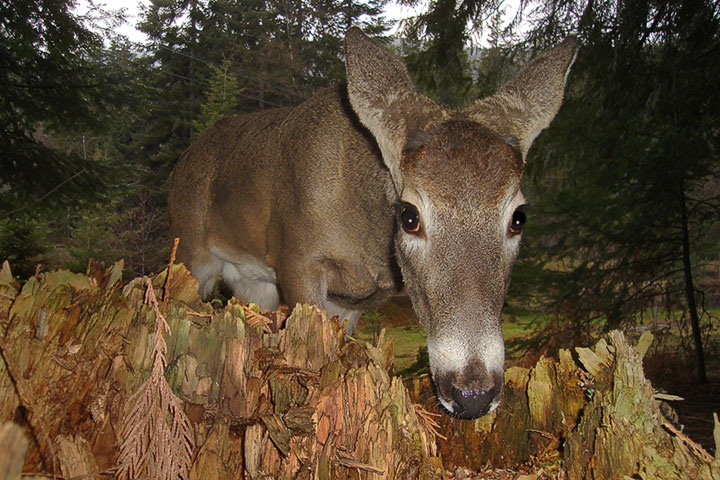 A white-tailed doe is unaware of the camera: its ears are turned to detect predators from behind.
A white-tailed doe is unaware of the camera: its ears are turned to detect predators from behind.
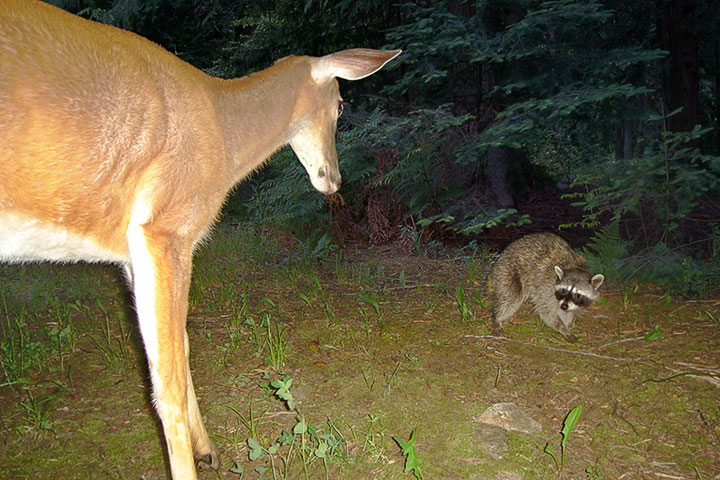 A white-tailed doe encounters a raccoon. The raccoon withdrew.
A white-tailed doe encounters a raccoon. The raccoon withdrew.
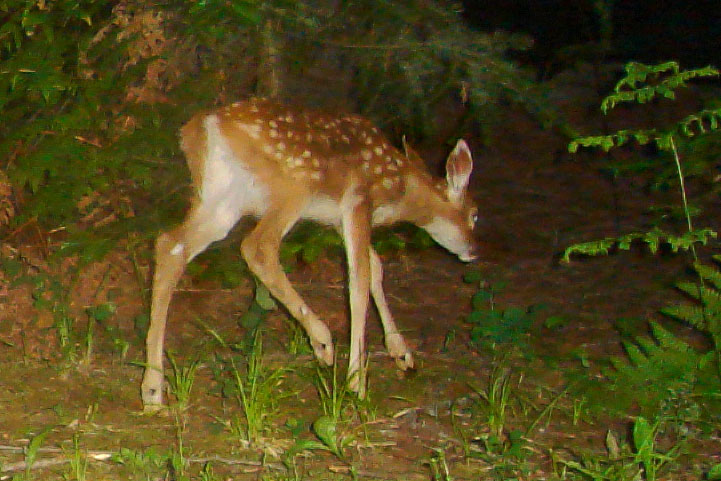 A white-tailed fawn goes foraging in the evening.
A white-tailed fawn goes foraging in the evening.
 A white-tailed doe lifts a hind leg to scratch and reveals a full udder.
A white-tailed doe lifts a hind leg to scratch and reveals a full udder.
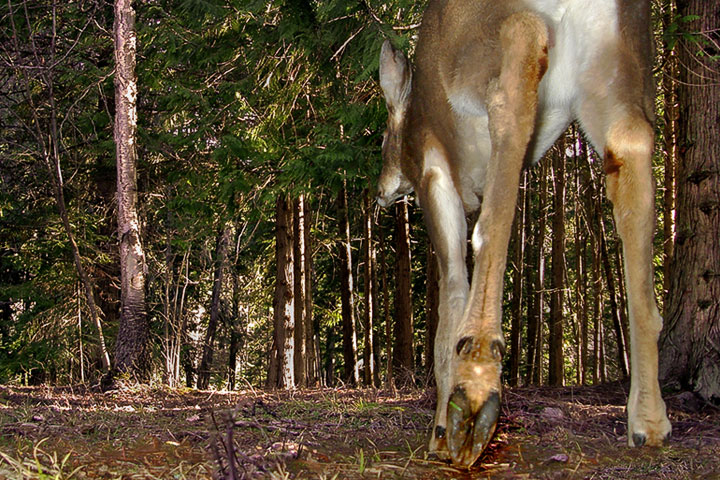 It is hard to imagine taking a shot such as this without using a trail camera.
It is hard to imagine taking a shot such as this without using a trail camera.
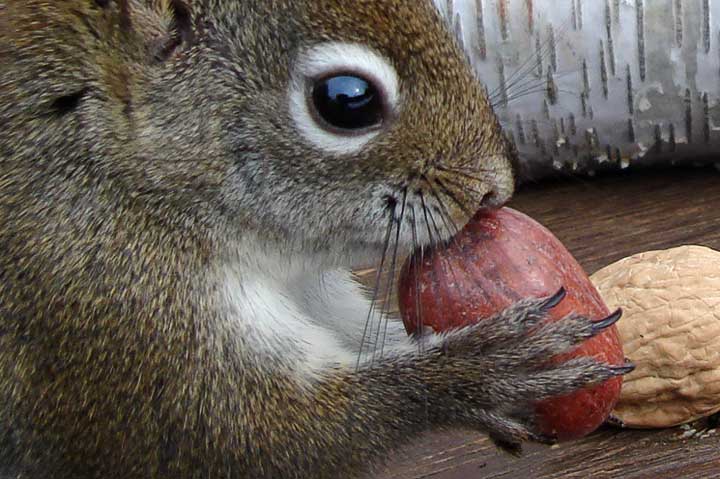 This red squirrel is wearing its winter coat.
This red squirrel is wearing its winter coat.
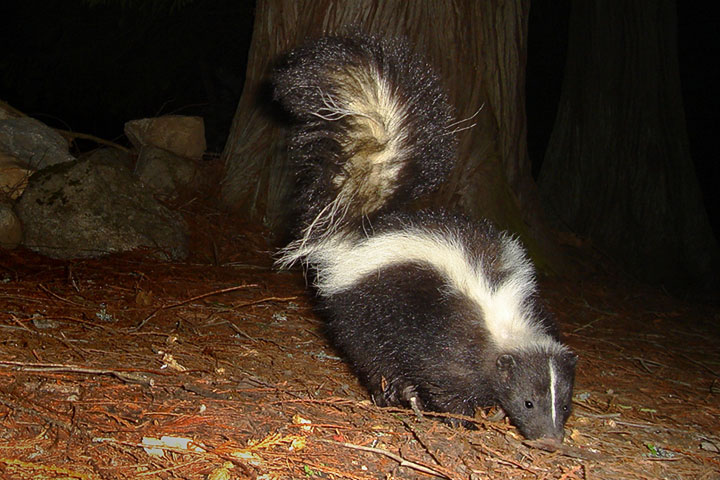 To catch a good picture of many of the smaller animals, it helps to mount the camera low.
To catch a good picture of many of the smaller animals, it helps to mount the camera low.
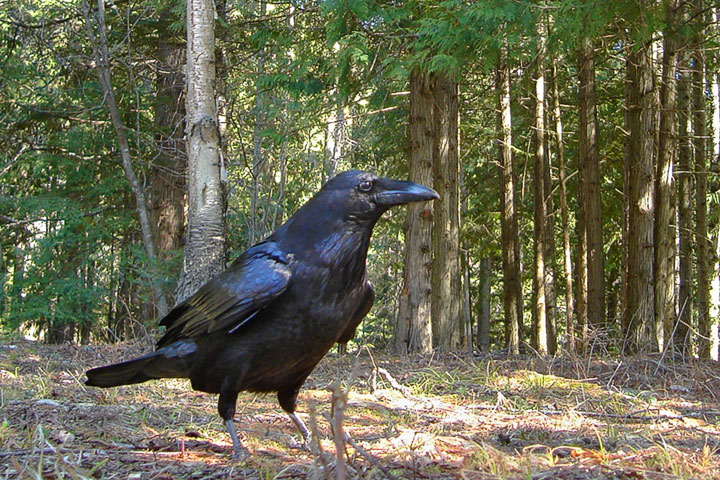 Most bird pictures are taken with a telephoto lens. This raven shot has a more intimate feeling.
Most bird pictures are taken with a telephoto lens. This raven shot has a more intimate feeling.
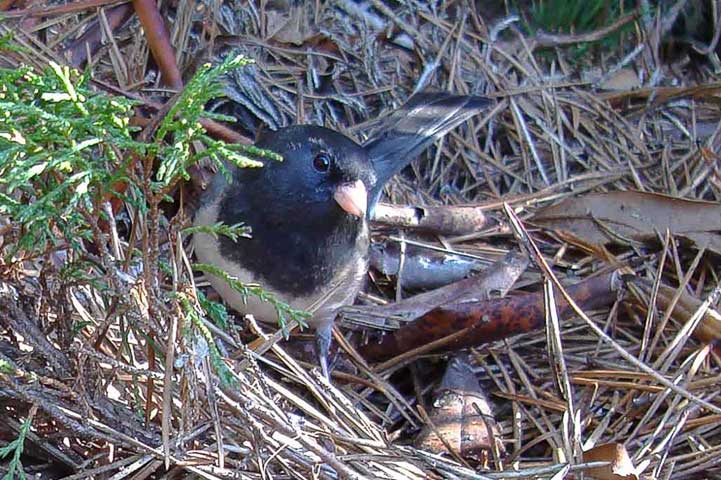 The dark-eyed junco is a ground-dwelling sparrow. Just lean the camera against a rock.
The dark-eyed junco is a ground-dwelling sparrow. Just lean the camera against a rock.
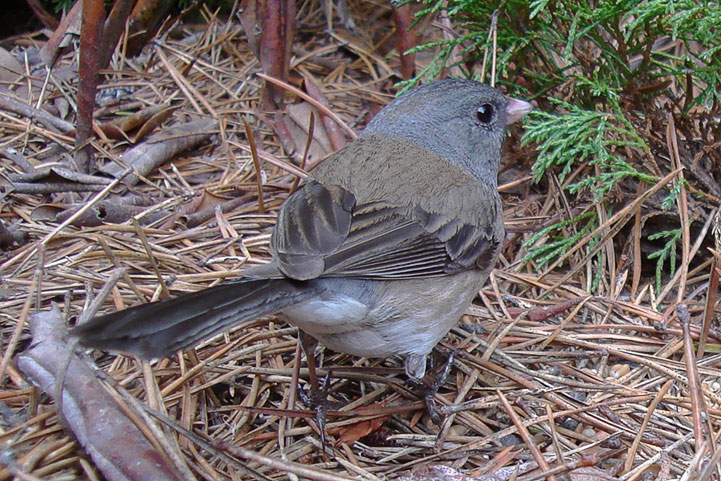 This female dark-eyed junco forages on the ground, so is ideal for intimate trail camera shots.
This female dark-eyed junco forages on the ground, so is ideal for intimate trail camera shots.
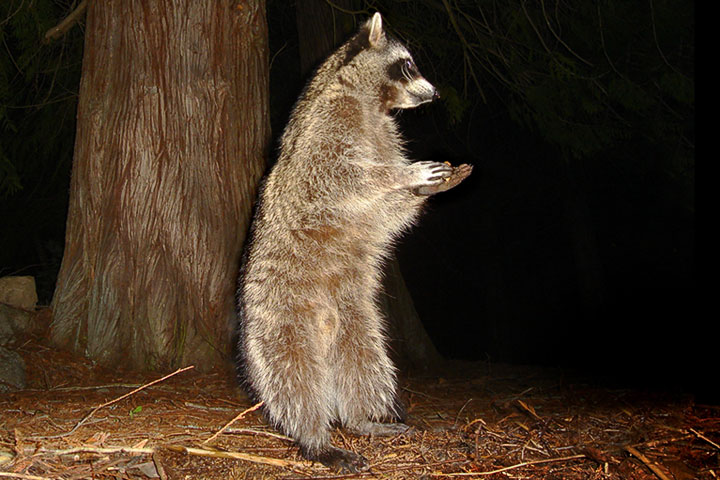 Few other animals could stand and handle food in the way a raccoon does.
Few other animals could stand and handle food in the way a raccoon does.
You may explore the rest of the Website: roll the cursor over  in the upper left corner to explore the menu. The trail camera used for these pictures was made in Alberta: Treebark Cameras.
in the upper left corner to explore the menu. The trail camera used for these pictures was made in Alberta: Treebark Cameras.